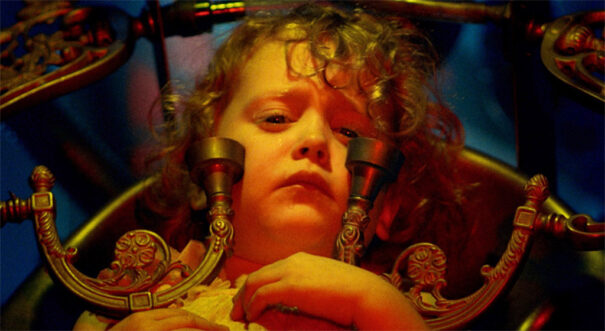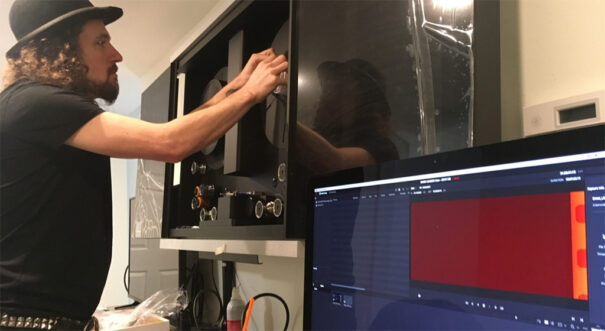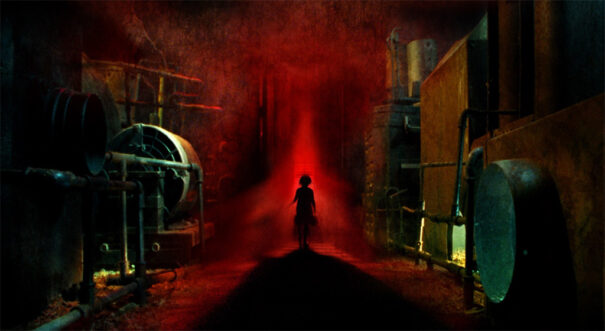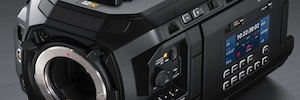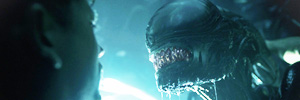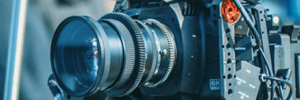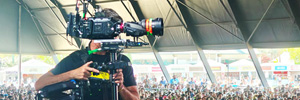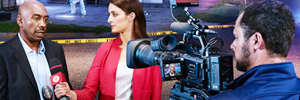Moon Garden’, from 35 mm to digital with Cintel and DaVinci Resolve Studio
Ryan Stevens decided to shoot his latest short film ‘Moon Garden’ in 35mm, which required digitizing with Cintel scanners and was finished with DaVinci Resolve Studio, both solutions from Blackmagic Design.
Billed as a fantasy epic, Moon Garden (Fire Trial Films) tells the story of a young girl in a coma who, with the help of magical creatures, embarks on a journey through a wondrous industrial world to find her way back to a state of consciousness. The film flaunts a number of traditional cinematic tricks, such as the use of slow motion, puppets, sequential photography and miniatures to enlarge the overall shots, as well as a tank with different layers of liquids to simulate the night sky. John Elfers, producer of the short film, assembled a diverse range of tapes for the production, including Kodak 5212 (100T) (used as the primary recording medium) and Kodak 800T (no longer in production) negatives, while cinematographer Wolfgang Meyer used various film cameras to shoot the feature.
The goal of the filmmakers was to develop a unique style and a fantasy look. As Stevens says: “It was always the idea to create a world that seemed as if it were exhumed from the earth or repurposed. Moon Garden was always meant to feel out of its time, as if an old dusty film reel were found in an attic somewhere, wound up on a projector, and rediscovered. One of the central themes of the film is whether broken things can truly be fixed, so to assemble the world out of crumbling machinery just felt right.” To accompany this vision, Elfers decided to dispense with digital: “Every time we’ve shot on film, we get the footage back and it looks exceptionally better than it did in reality. Film has a way of binding everything together, glossing over imperfections, and elevating the imagery.”
The role of the Cintel scanner
Although the team had the necessary tools for production and an unwavering desire to achieve a particular style, digitization played an important role. In Elfers’ words: “The lynchpin that made everything possible, is that our business partner Ken Locsmandi of Filmworks/FX invested in the Blackmagic Cintel Scanner, removing one of the most expensive hurdles to shooting film. I trained on the scanner, and after that, we had all the resources we needed for our own 35mm workflow.”
Given the diversity of film cameras used to achieve the unique look, digitising on a system that offered all the guarantees was necessary. In Stevens’ words: “It was a very visually ambitious film, both creatively and technically. To achieve many of the in camera tricks and various shots, we used more than twelve different 35mm cameras, including two, three and four perf systems.”
Considering this diversity of formats, the potential expense of digitization would have been a concern without the scanner: “One of the biggest advantages of the Cintel is the ease of switching between perf formats. With other telecine brands, if you wanted to switch between perf formats you had to physically change the gate in the scanner. With the Cintel, it changes with the click of a button. Labs usually separate each reel according to the perf format, which can triple costs when you shoot mixed footage. We saved thousands by being able to mix formats on the same rolls.”
DaVinci Resolve Studio, a key tool
Le Moon Garden team digitized the footage directly from DaVinci Resolve Studio, which gave them access to additional features that made it easier to manage the differences in image quality caused by using different types of celluloid. As Elfers says, “Part of the aesthetic of ‘Moon Garden’ was shooting on expired film, which organically has color shifts over time. While we leaned into the look of heavy film grain, the footage still needed to cut together. Sometimes one roll would skew magenta, another green, etc, but the scanner has this incredible Auto Black tool, where it analyzes the space between frames, and balances to it. That was a lifesaver, bringing the footage almost back to normal, while maintaining the vintage look.”
Once the aesthetics of the different negatives had been balanced, Stevens took the lead on the color grading of the short film, again using DaVinci Resolve: “From the heavy grain to the organic film color shifts due to our expired film stocks, the color process was an intensive one. I initially did an extensive base grade, yanking all the various film stocks back into their correct ranges, and rebalancing some of the more extreme and damaged film stocks. From there I was able to use windows and trackers to isolate particular swathes of color, the deep reds or midnight blues, to make sure the colors truly popped. After my grade, I handed the Resolve project off to Elliot Smith, a Los Angeles based colorist I’ve worked with before, who did a pass, accentuating choices and honing in on the overall look.”
“With the more damaged stocks sometimes there would be such heavy grain that the footage could sometimes turn into this murky soup. Resolve has literally the best noise reduction out there so I was able to bring back even that footage, which included some material that seemed otherwise unusable. Beyond the color tools, we used all sorts of tricks to finish the picture. Fusion Effects, for example, was used to clean up gate frames that would creep in. We then did a careful dust busting pass to clean up unwanted film dirt or effects, particularly heinous scratches, though many of these issues we opted to leave in as it leant itself to the overall look of the film. Time and time again, Resolve proved itself to be robust and reliable. A true workhorse of post software and such a joy to work with,” concludes Stevens.
Cet article vous a plu ?
Abonnez-vous à notre Nourrir Et vous ne manquerez rien.



